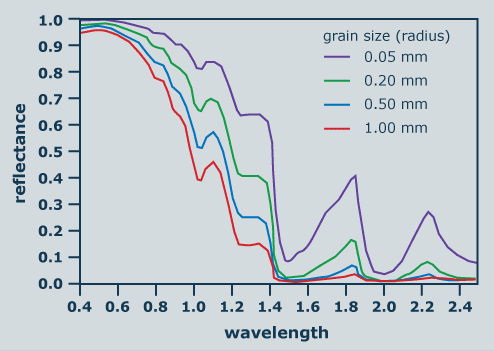 |
|
|
|
|
|
|
Of the total radiation reaching the snow surface, some is reflected at the surface and some penetrates into the snow. The ratio of reflected to incoming radiation is called albedo. The albedo of new snow is high. As shorter waved radiation is reflected most efficiently, organisms above the snow surface face highly increased amounts of short-wave radiation.
|
||
| Albedo varies with varying snow surface characteristics. See how much radiation is reflected at different locations. Consider where the reflection is highest and lowest. Then move the radiation arrow over the landscape to see realistic values. |
||
|
Albedo examples for different snow types:
|
||||||||||
|
Radiation decreases with increasing depth of snow due to extinction (absorption). The intensity of radiation in snow decreases exponentially with depth. Depending on density and snow grain characteristics, the extinction coefficient varies between 20 and 150/m. |
|||||||||
|
|
||||||||||
| In contrast to radiation in the visible
bands of light, long-wave radiation (> 3mm) is almost perfectly absorbed
by the snow. Hence, snow is nearly a "black body" for long wave radiation. |
 |
Snow reflectance also varies with the grain size of snow. How do you explain the measurement data shown here? |
|
| 1 - Snow reflectance by different grain sizes. Source: Dozier (1989) and Warren (1982) |
29 August 2011 |
||
| |
||